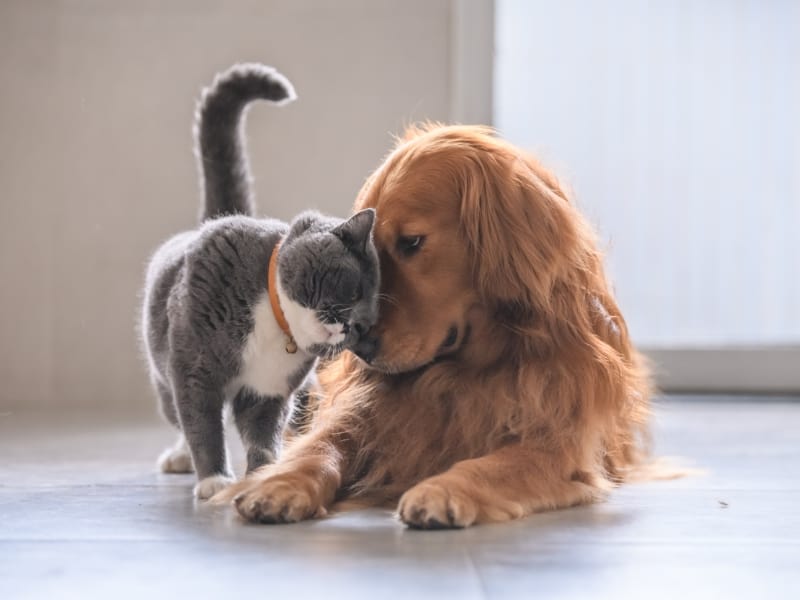Pet Fun Facts
Why do pets wag their tails?
The most common reason that pets, such as dogs, wag their tails is to communicate their emotional state to their owners or other animals. Dogs, for example, will often wag their tails when they are happy or excited, such as when they see their owner come home or when they are playing with a favorite toy. They may also wag their tails when they are feeling curious or interested in something.
However, it’s important to note that not all tail wagging is a sign of happiness. Sometimes, a dog may wag their tail in a more stiff, slow manner, which can indicate that they are feeling anxious or unsure. Additionally, cats and other pets may use their tails in different ways to communicate, such as flicking their tails when they are agitated or holding their tails up high when they are feeling confident.
Overall, tail wagging and other tail movements are an important part of how pets communicate with each other and with humans and can provide valuable insight into their emotional state.
Why do cats purr?
Cats purr for a variety of reasons, and it’s a behavior that is thought to have multiple functions. One of the most common reasons that cats purr is to express contentment or pleasure. When a cat is feeling relaxed and happy, they may purr to show their enjoyment of a particular situation or activity.
However, cats may also purr for other reasons. For example, some cats may purr when they are feeling anxious or stressed, to self-soothe and calm themselves down. Additionally, cats may purr to communicate with humans or other animals, such as when they are seeking attention or trying to express a need.
Interestingly, it’s not entirely clear how cats produce the sound of purring. It’s believed that the sound is created by the rapid vibration of muscles in the larynx and diaphragm, but the exact mechanism is still not well understood. Regardless of how it works, purring is a fascinating behavior that plays an important role in how cats communicate with the world around them.
Do dogs and cats smile?
While pets, such as dogs and cats, may make facial expressions that resemble a smile, it’s important to note that these expressions do not necessarily indicate that the animal is experiencing the same emotions that humans associate with smiling.
In dogs, for example, a “smile” may involve pulling back the lips to reveal the teeth, which can be a sign of happiness or playfulness. However, it’s also possible for a dog to bare their teeth as a sign of aggression or fear, so it’s important to consider the context of the situation before assuming that the dog is smiling.
Cats, on the other hand, may also make facial expressions that resemble a smile, such as when they narrow their eyes and tilt their head. However, again, it’s important to remember that these expressions may have different meanings in the context of feline behavior.
Overall, while pets may make facial expressions that look like a smile, it’s important to consider other aspects of their body language and behavior in order to accurately interpret their emotional state.




